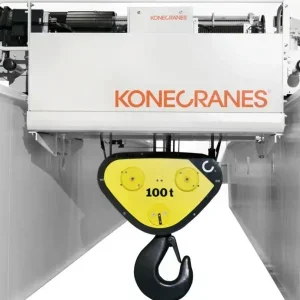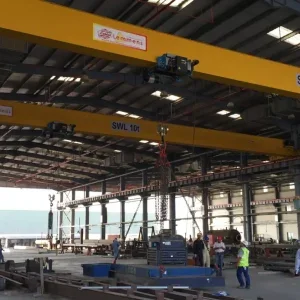The superconducting dipole magnets are the most complex components of the LHC machine. Their superconducting coils allow them to convey extremely high electric currents without any loss of energy. This enables them to produce the high magnetic fields necessary to force the trajectory of protons to follow a 27km circular path at nearly the speed of light.

A large dipole magnet was symbolically lowered into the tunnel
The collisions between the protons will reach energies of 14 teraelectronvolts (TeV) – 70 times higher than those of the former LEP collider for which the 27km tunnel was originally built – making the LHC the world’s most powerful accelerator. If the LHC had been made of conventional magnets, it would have needed to be 120km long to reach the same energies, and its electricity consumption would have been phenomenal.
Like the hundreds of magnets that came before it, the final magnet was lowered 50m below the Earth’s surface through a custom-built shaft with an oval cross-section. It was then conveyed via a transfer tunnel to the LHC tunnel itself, which lies between 50 and 150m underground; once below ground, specially designed transport vehicles delivered the magnet to its final destination at 3km an hour. The narrowness of the tunnel complicated these handling operations, making it impossible, for example, for two loads to pass each other.
“More than 35,000t of material has been safely lowered underground, transported up to 15km inside the tunnel and positioned with an accuracy of a tenth of a millimetre,” said LHC project leader Lyn Evans. “It is a fantastic achievement.”
Once in position, the magnets are connected to the cryogenic system to form a large string operating in superfluid helium, which will maintain the accelerator at a temperature just two degrees above absolute zero (-271°C). The cryogenic capabilities of the superconducting magnets were tested at CERN between 2004 and early this year, with the last dipole magnet passing its cryogenics testing on 1 March.
The manufacture of these superconducting magnets was a huge technical and industrial challenge both for CERN and for European industry. Over 1,000t of niobium-titanium superconducting cable had to be produced. Around a hundred companies in Europe manufactured the magnet components, and three companies, Babcock Noell Nuclear in Germany, Alstom in France, and Ansaldo in Italy, were responsible for their assembly. At the height of production, the three industrial sites were able to manufacture between nine and 10 magnets a week.
CERN (the European Organization for Nuclear Research) CERN A large dipole magnet was symbolically lowered into the tunnel magnet






